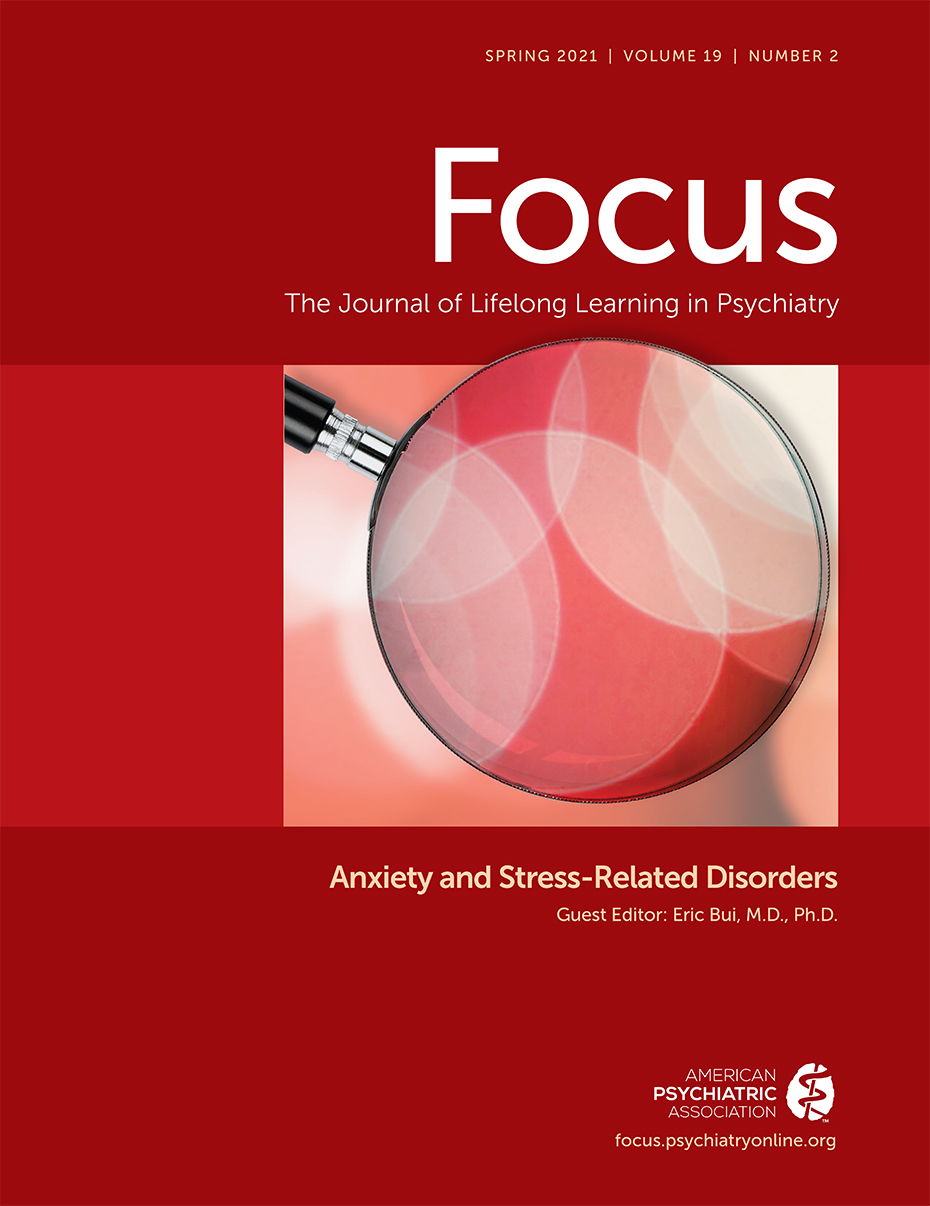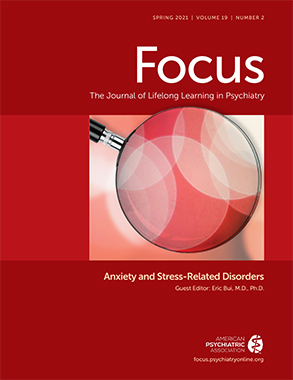(Reprinted with permission from Depress Anxiety. 2020;37:505–509)
The current COVID-19 pandemic is an invisible threat unprecedented in its global reach and extended, uncertain nature. No individual or community is left without impact, whether it is infection risks, COVID-19 illness, loss of a loved one, disrupted employment, or financial strains. Much of the world has experienced an extended and uncertain time period of quarantine and/or social distancing restrictions that substantially interfere with usual work and social routines, cultural and religious customs, work and leisure activities, and the availability of services. For healthcare and other frontline workers, there is ongoing risk of morbidity and mortality for themselves and their families as a result of their service. Although this specific pandemic is larger than previous pandemics and has resulted in more deaths than the Attacks on September 11, 2002 (
Center for Disease Control, 2020), there is much that the mental health field knows from military, disaster settings, and other types of trauma exposures that can help guide how we support our health professionals working in this extremely stressful environment (
VA/DOD, 2017). Investments in efforts to support mental health and provide indicated prevention and intervention may decrease long-term risk for negative mental health outcomes, including for healthcare workers and other staff on the front lines of the pandemic.
Many are predicting that the mental health impact will be grim. We agree that the mental health impact will be significant, but also feel confident that for most, the pandemic and its aftermath will be a significant stressor that people cope with in real time and even if highly distressed acutely, will eventually naturally recover and move on to a new normal and satisfying life. The mental health response must be measured and not overly emphasize a belief and expectation of an epidemic of unmanageable long-term negative mental health impacts. Instead, while planning to address mental health needs that will arise, we should project hope and have confidence that most people will recover with time. Data from the field of trauma and bereavement strongly support that resilience is the modal outcome even for severe challenges (
Bonanno et al., 2002;
Rothbaum, Foa, Riggs, Murdock, & Walsh, 1992). Nonetheless, a shortage of access to effective mental healthcare was already a problem before the pandemic and will worsen even if only a small percentage require intervention (
Thomas, Ellis, Konrad, Holzer, & Morrissey, 2009). As such, planning needs to consider efficient use of resources and possibly stepped care models to provide the most effective and least resource-intensive course of care to respond adequately (
Richards et al., 2012;
Zatzick et al., 2013). Helping people cope acutely while assuring access to those in need of higher levels of mental health intervention are critically important goals. Although the evidence base for prevention intervention is less clear about optimal approaches, there are nonetheless many helpful strategies that may help reduce both short- and long- term distress, and their targets are guided by relevant clinical and research lessons learned over many years. Key to any mental health response to the current pandemic or other extended potentially highly distressing and/or traumatic events is a response that simultaneously considers both timing (referred to as phase) and associated distress and/or functional impairment (referred to as level). As defined below, the framework includes three phases (initial, post, and longer-term) and three levels (system level, self-directed level, and mental health supported brief intervention).
The Phased Approach to COVID-19 Mental Health Response (PAC), now freely downloadable on the
Anxiety and Depression Association of America website (
https://adaa.org/sites/default/files/PhasedApproachtoCovid-19.ver1.1%20(002).pdf), is a framework for COVID-19 mental health response (see
Table 1). This framework of phased interventions and resources is intended to assist health systems and programs impacted by the pandemic to plan for how to address current mental health issues arising as well as to prepare and plan for the continued needs of their communities, patients, and staff. In addition, many of the resources presented may be used by healthcare professionals and others on the front lines of care, as well as anyone being significantly impacted by COVID-19 as they see fit. The framework provides a model for response over time and across the wide range and severity of potential impact of the pandemic, including program design considerations and examples of evidence-guided resources when available. For specific areas where previous resources were not freely available, select evidence-informed brief interventions were created and are downloadable from the Framework posting on the ADAA website (mask desensitization [with colleagues from the University of Chicago, Emory University School of Medicine, and New York University]), self-directed difficult experience exposure (created by the authors and Dr. Jeffrey Cigrang), and assessment protocol with brief intervention for an MH provider adapted from
Rothbaum et al. (2012).
Phased Approach
This proposed phased approach is intended to help guide efficient allocation of mental health resources to those most in need of assistance at the time that they need it at the level that they need it (e.g., self-directed vs. brief intervention with some support vs. traditional treatment sessions with a provider). Appropriate allocation of expert mental health resources can assist the system in providing evidence-based clinical care to those who need it.
The
initial phase includes the period of time while we are dealing with the ongoing stressor, such as the current COVID-19 pandemic (see
Table 1). This phase would end when the initial risk and impact has ended or reduced to a “new normal” or lower level of risk. The
post-phase includes the initial responses in the period after the acute exposure to risk and loss is complete and the following 3 months when expectations are that people impacted will be having various levels of emotional reactions and response (see
Table 1). The
long-term phase covers from 3 months after the individual's experience of impact and loss is over and into the future (see
Table 1). For this pandemic, the phases will overlap for individuals depending on their roles and specific impacting traumatic exposures (traumatic loss of significant others, exposure to death at work, etc.). Further, grief responses generally occur on a longer timeline with current iterations of prolonged or complicated grief utilizing a 6- or 12-month minimum for diagnosis to account for broad individual, cultural and religious variability in usual acute grief and its evolution to more integrated forms of grief (e.g., for recent commentary and treatment approaches see (
Iglewicz et al., 2020;
Simon et al., 2020).
Within each phase, there are different levels of response. The
system supported level focuses on recommendations for leadership and organizations to put in place for those in the relevant phase (see
Table 1). The
self-directed level includes resources that individuals can work with on their own. These self-directed interventions are intended to be used based on either self-assessment of need or as an initial intervention for those with mild to moderate distress and/or functional impairment without imminent risk to self or others (see
Table 1). Finally, the
mental health supported brief intervention level includes brief interventions provided with entry through primary care or mental health providers for those with a higher level of need or for whom self-directed approaches are not possible and/or effective (see
Table 1).
As basic principles across all phases and levels, systems and individuals engaging in mental health response are encouraged to:
(1)
Ensure basic needs for food, sleep, and lodging are met. For healthcare providers and staff, this means management of risk of personal and family COVID-19 infection such as PPE.
(2)
Find creative ways to safely enhance social connection and support.
(3)
Provide ongoing support for people as they would like- not a single shot.
(4)
Encourage people to use what positive coping strategies have worked for them in the past that they can draw on again such as talking with friends and/or family, exercise, yoga, prayer, and so forth and monitor or possibly reduce unhelpful coping such as the use of alcohol or other harmful strategies.
(5)
Create opportunities for people as they are interested and able to talk about difficult experiences. This can be helpful to process them, but avoid compelling people to tell their stories, especially in groups. Let them share as they are ready and willing- be ready to listen but don't force the story.
(6)
Avoid group debriefing where everyone is required to share and listen to details of death or traumatic events. This has shown iatrogenic effects in some studies of trauma and PTSD. Other types of group support efforts, however, can be helpful to provide an opportunity to build community, emotional support, psychoeducation, and reminders about resources (even if virtual).
(7)
Provide information about accessible mental health resources for those who may need them.
People undergoing stress most often need support from family and community for basic needs, safety, and emotional support. Plans for mental health response in the coming months must focus on providing social support and helping people to feel in control of things they can control while focusing professional mental health resources on those who need it most. The framework offers some ideas about how to integrate a phased approach to helping support those on the front lines or anyone being significantly emotionally challenged by the COVID-19 pandemic to meet our community needs over time. Empirical examination of the evidence-informed new resources that are part of the framework will soon be underway and as we learn about needs and response overtime, this framework will be modified to address the best science available.
Acknowledgment
The contents do not represent the views of the US Department of Veterans Affairs, Department of Defense, or the United States Government.

